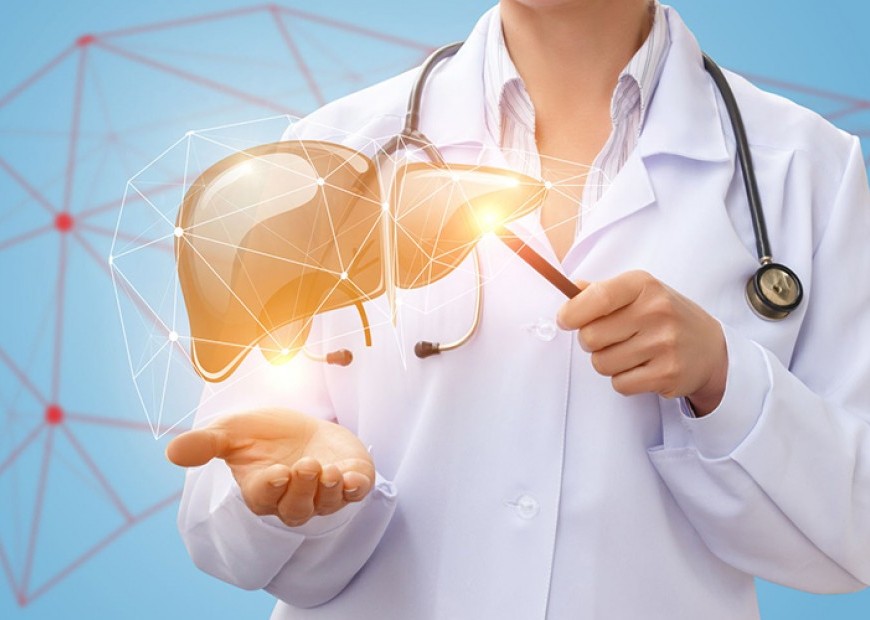Love your Liver. Live your Life.
Your liver is the second largest organ in your body located under your rib cage on the right side. It performs many jobs like processing what you eat and drink into energy and nutrients for your body. The liver is also in charge of removing harmful substances from your blood along with fighting infections and cleaning your blood. A healthy liver has the incredible ability to grow back or regenerate when damaged, however, anything that keeps your liver from doing its job or growing back when injured may put your life in danger.
Viral Hepatitis is the most common cause of hepatitis worldwide. Other common causes of non-viral hepatitis include fatty liver, alcoholic, toxic and drug-induced Hepatitis B is a major public health problem in the Philippines. It is the leading cause of liver cirrhosis and liver cancer. Hepatitis B affects 1 in 8 adult Filipinos Liver cancer is the third most common cancer and is the second leading cancer killer among Filipinos. The number of deaths from liver cancer caused by Hepatitis B will double in 15 years unless efforts are made to control it. Every day, we see many patients - young and old, rich and poor who are beyond cure. All this could have been prevented had they been vaccinated at birth and for those already infected, tested and treated early.The bad news is that timely birth dose vaccination in the country remains disappointingly inadequate; in spite of the fact that infant Hepatitis B vaccination is free for every Filipino.
The progression of liver disease usually begins with inflammation. When the organ becomes inflamed, it may become tender and enlarged. The inflammation shows your body is trying to fight an infection or heal an injury, but if it continues, it can damage the liver permanently. After inflammation comes fibrosis. This means the liver is beginning to scar. As excess scar tissue grows, it replaces healthy liver tissue. Scar tissue cannot do the work that healthy unscarred liver tissue can do. Plus it keeps blood from flowing properly. As more scar tissue builds, the liver may not work as well as it used to and the healthy portion of the liver will have to work harder to make up for the scarred part.
If left untreated, scarring may become so serious that the liver can no longer heal itself. When the damage cannot be reversed, it is called liver cirrhosis. Cirrhosis can lead to a number of complications, one of the worst of which is liver cancer. In some cases, symptoms of cirrhosis may be the first signs of liver disease including bleeding or bruising easily, water buildup in legs or stomach, yellowish tinge called jaundice, blood vessel blockage, sensitivity to medications, or the development of type-2 diabetes.
It is possible to prevent further liver damage with proper management of liver cirrhosis. Steps you can take include living a healthy lifestyle with proper diet and exercise, limiting your salt in your diet to prevent or reduce fluid buildup, avoiding raw shellfish, stopping alcohol intake, proper vaccinations, talking to your doctor about all medications, vitamins, and supplements you should take, practicing safe sex, using clean and sterile needles only for tattoos or piercings, and not sharing needles, razors, toothbrushes and other personal items with others.
At the most advanced stage of liver disease, complete liver failure can occur. This means the liver has lost all function. This is a life-threatening stage of liver disease needing immediate urgent care. First symptoms often include nausea, loss of appetite, fatigue, and diarrhea. As it gets worse, symptoms become more serious. Patient may get confused, drowsy, and disoriented. There is a risk of coma and death. This is usually only treated with a liver transplant if the patient is eligible.
Cirrhosis, liver cancer, and liver failure are serious conditions that can threaten your life. Once you have reached these stages of liver diseases, treatment options may be very limited. That is why it is important to catch liver disease early. If treated in inflammation and fibrosis stages your liver has a chance to heal itself and recover.
St. Luke's Medical Center, in cooperation with the Hepatology Society of the Philippines and Department of Health, will celebrate the World Hepatitis Day 2017 with the theme “Infant Vaccination Within 24 Hours of Birth to Prevent Hepatitis B. World Hepatitis Day is one of only four official disease-specific world health days declared by the World Health Organization (WHO). It is celebrated every year on the 28th of July and brings the world together to raise awareness of the global burden of viral hepatitis and to influence real change.
the Hepatology Society of the Philippines public awareness campaign on Hepatitis B called the B Aware Campaign – Be Tested. Be Vaccinated. Be Treated. This is a multi-platform campaign with the objective of raising awareness about Hepatitis B among the general public.
Dr. Ian Homer Y. Cua is an active consultant gastroenterologist and hepatologist at the Institute of Digestive and Liver Diseases, St. Luke’s Medical Center- Quezon City and Global City. He is the Immediate Past President of the Hepatology Society of the Philippines and member of the Executive Council of the Asian Pacific Association for the Study of the Liver. Dr Cua had his fellowship training in Hepatology at the Westmead Millenium Institute, University of Sydney at Westmead Hospital, his fellowship training in Interventional Hepatology at the Chang Gung Memorial Hospital in Taiwan, his fellowship in Transplant Hepatology at the Columbia University Medical Center, New York Presbyterian Hospital USA. For inquiries or appointment, please contact the St. Luke's Liver Disease and Transplant Center in Global City at (02)7897700 ext. 2038 or 2042/2046 and in Quezon City at 7230101 ext. 4178.





